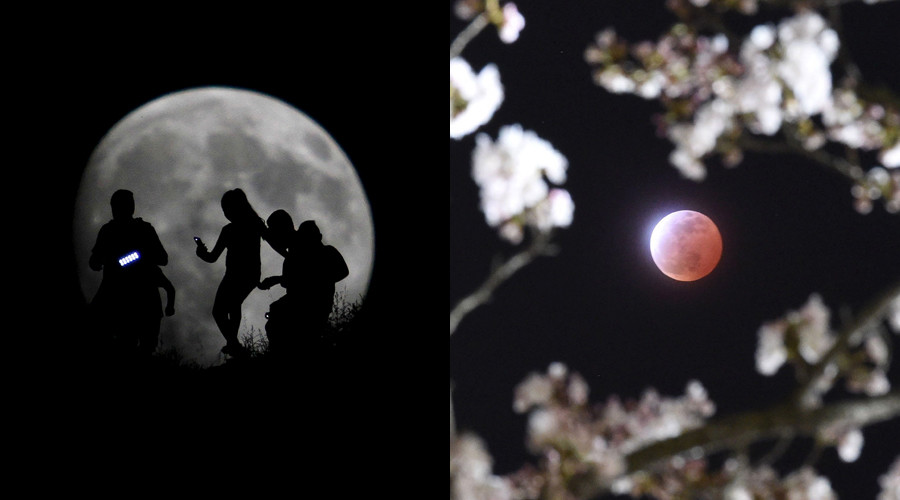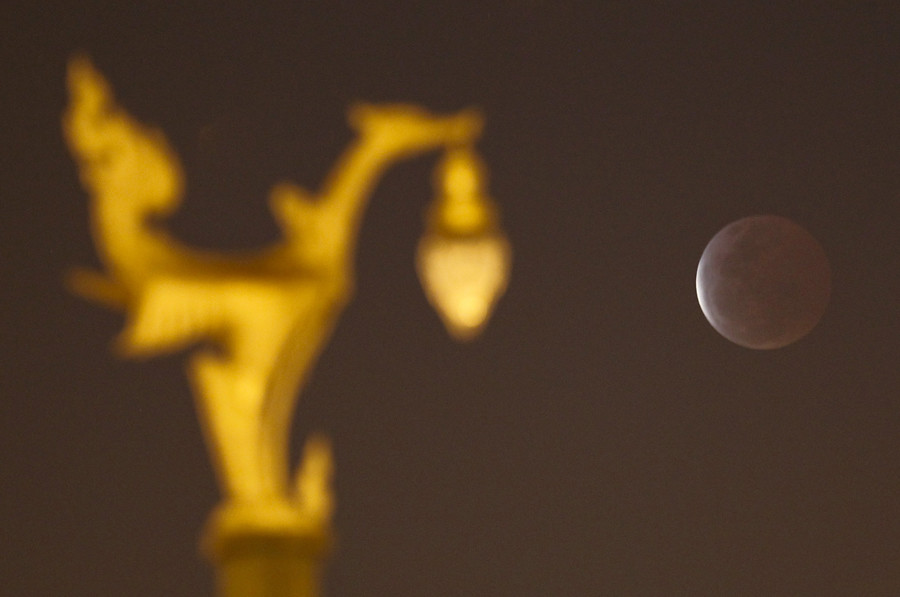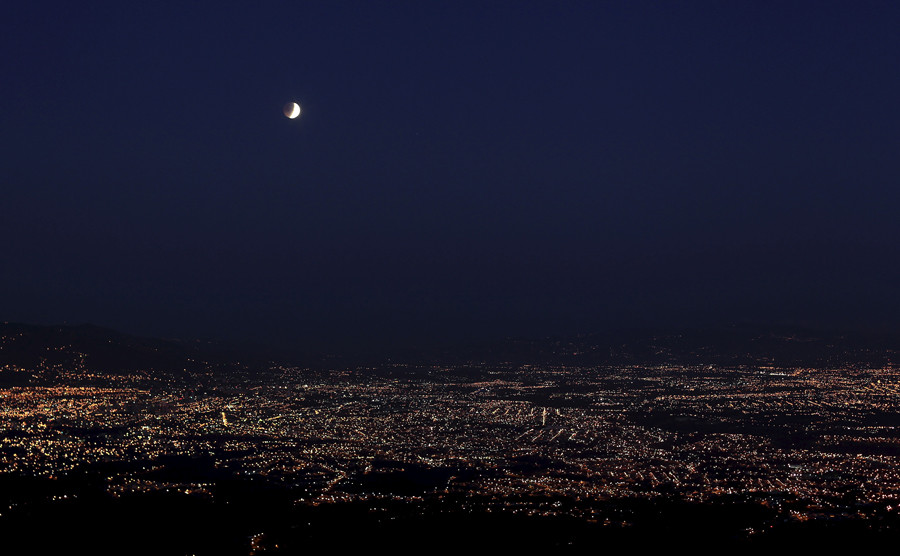Double-stunner: Stargazers to see total lunar eclipse, super moon in 1 night, first in 30 years

Sky watchers are getting ready for an extremely rare astronomical highlight of the season: a total lunar eclipse and a super moon that will happen simultaneously.
The stunning show will be visible to the naked eye, and will start next Sunday, September 27, between 5pm and 6pm PDT time (between midnight and 1am GMT on Monday).
The super moon, or a perigee full moon, means that the moon will seem 14 percent bigger, 30 percent brighter and fuller than usual. It happens because the moon will be at its closest point in its orbit around the Earth.
A total lunar eclipse, also known as a "blood moon", is seen from near a swan statue in Nakhon Pathom province on the outskirts of Bangkok April 4, 2015. © Chaiwat Subprasom
"Because the orbit of the moon is not a perfect circle, the moon is sometimes closer to the Earth than at other times during its orbit. When the moon is farthest away it's known as apogee, and when it's closest it's known as perigee. On September 27, we're going to have a perigee full moon—the closest full moon of the year," Noah Petro, deputy project scientist for the Lunar Reconnaissance Orbiter at NASA's Goddard Space Flight Center in Greenbelt, Maryland, said, as quoted in the NASA press release.
At perigee, the moon is about 50,000 kilometers closer to Earth than at apogee.
Moments after the super moon, the Earth will start to move between the sun and the super moon, finally casting a complete shadow.
The total lunar eclipse will start the same Sunday at 7:11pm PDT (2am GMT on Monday) and will end at 8:23pm PDT on Sunday (3:23 GMT on Monday).
The next super moon and a total lunar eclipse combination is only set to happen in 2033, so try not to miss the stunning show!
Политика конфиденциальности | Правила пользования сайтом









